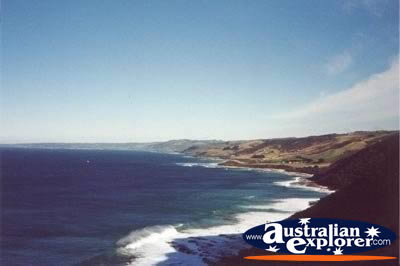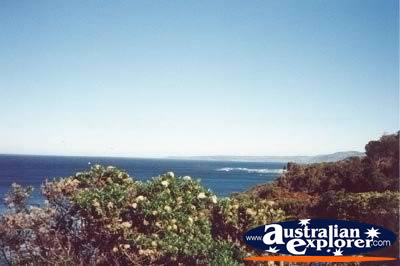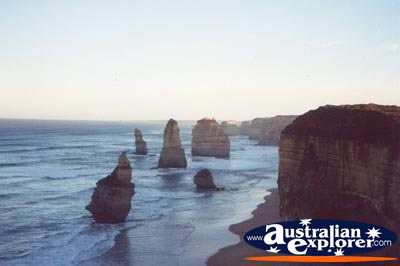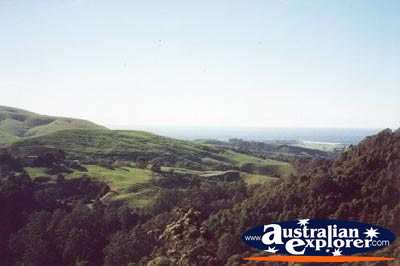The Great Ocean Road is one of the finest scenic drives in the world. It takes in both bathing beaches and surfing beaches, rain forest, waterfalls, cliffs and an assortment of uniquely characterful towns.
The Great Ocean Road was first planned towards the end of the First World War, when William Calder asked the State War Council for funds to be provided for returned soldiers to work on roads in populated areas in the Western district. By the time of World War I, the rugged south-west coast of Victoria was accessible only by sea or rough bush track. It was envisioned that the road would connect to isolated settlements on the coast, and become a vital transport link for the timber industry and tourism.
 The Great Ocean Road starts inland just east of Allansford along the Princess Highway, taking you to Geelong from where you join the M1 to Melbourne. From Allansford the track leads towards the coast past the beautiful landscape of the national parks, pretty coves and beaches along the coastline, as well as spectacular rock formations such as the Twelve Apostles and some great surfing spots.
The Great Ocean Road starts inland just east of Allansford along the Princess Highway, taking you to Geelong from where you join the M1 to Melbourne. From Allansford the track leads towards the coast past the beautiful landscape of the national parks, pretty coves and beaches along the coastline, as well as spectacular rock formations such as the Twelve Apostles and some great surfing spots.
It really is worth while travelling along this route as the scenery is spectacular and there are plenty of great places to stop along the way.
 Heading east along the Great Ocean Road the first place you will come across is the Port Campbell National Park. There are some fabulous rock formations within the park. The first formation you will see is London Arch, a natural arch formed through erosion. London Arch was previously called London Bridge, due to the close resemblance of it's double arches to the actual bridge. The name changed to London Arch in 1990 after the first arch collapsed, leaving two tourists stranded. The tourists were rescued by helicopter and fortunately nobody was injured.
Heading east along the Great Ocean Road the first place you will come across is the Port Campbell National Park. There are some fabulous rock formations within the park. The first formation you will see is London Arch, a natural arch formed through erosion. London Arch was previously called London Bridge, due to the close resemblance of it's double arches to the actual bridge. The name changed to London Arch in 1990 after the first arch collapsed, leaving two tourists stranded. The tourists were rescued by helicopter and fortunately nobody was injured.
This area is also a great place to see the plentiful fairy penguins that reside along Victoria's coastline.
 Heading past Port Campbell you will pass Mutton Bird Island as well as The Blowhole, which is great to see. You will also come across Loch Ard Gorge where the Loch Ard clipper crashed in 1878, killing all but two people aboard. One of the most spectacular sights is the Twelve Apostles. The formation is really beautiful and is certainly worth seeing at sunrise or sunset. You can also head down to the Gibson Steps or the Gibson Beach.
Heading past Port Campbell you will pass Mutton Bird Island as well as The Blowhole, which is great to see. You will also come across Loch Ard Gorge where the Loch Ard clipper crashed in 1878, killing all but two people aboard. One of the most spectacular sights is the Twelve Apostles. The formation is really beautiful and is certainly worth seeing at sunrise or sunset. You can also head down to the Gibson Steps or the Gibson Beach.
If you do go onto any of the beaches along the coastline be careful, as many are too dangerous to swim and can leave you stranded if the tide comes in.
 Heading further east you pass the Melba Gully State Park, before reaching Cape Otway and the Otway National Park. The pacific Highway heads inland through the beautiful rainforest of the national park at this point, although there are several tracks which take you to coastal spots along the way.
Heading further east you pass the Melba Gully State Park, before reaching Cape Otway and the Otway National Park. The pacific Highway heads inland through the beautiful rainforest of the national park at this point, although there are several tracks which take you to coastal spots along the way.
You can stop at Blanket Bay which offers bush camping and walking trails, Elliott River picnic area, Maits Rest Rainforest boardwalk offer ra
inforest treks, Otway Lighthouse and Bimbi Park which is a horse ranch alongside some pretty beaches, as well as Shelly Beach.
Once you hit the coast again, you will shortly reach Apollo Bay, which is a pretty fishing town, with some popular beaches. Heading further east is another popular coastal resort of Lorne. East from Lorne you will pass through the Angahook-Lorne State Park before hitting the small town of Aireys Inlet. There are several places to stay at Aireys Inlet and some good beaches. Further east again are two slightly larger towns, of Anglesea and Torquay. Anglesea offers some great beaches as well as good surf. Hang-gliding is also popular as is playing golf and kangaroo spotting at the Anglesea Golf Club.
Great Ocean Road, VIC Accommodation
Destinations within Great Ocean Road
| Bellarine Peninsula | ||
| Other Great Ocean Road Destinations | ||
| Apollo Bay | Geelong | Lorne |
| Torquay | ||


